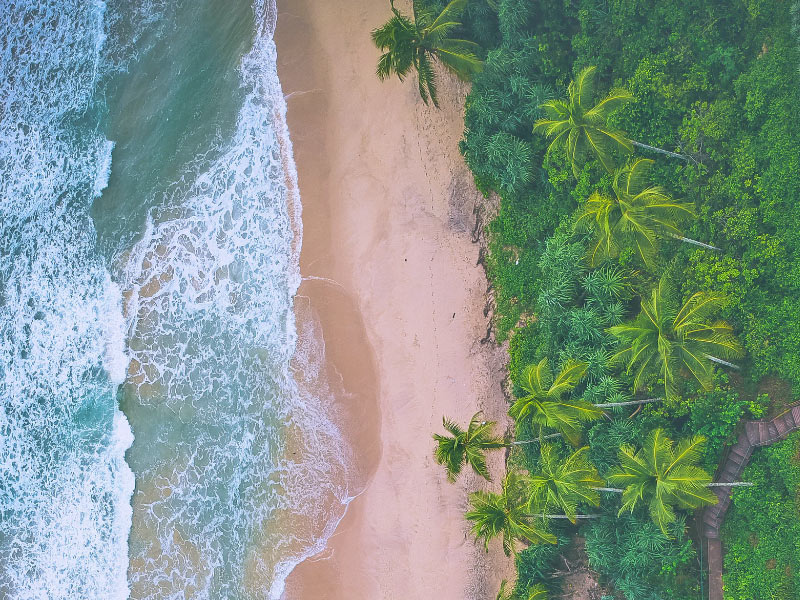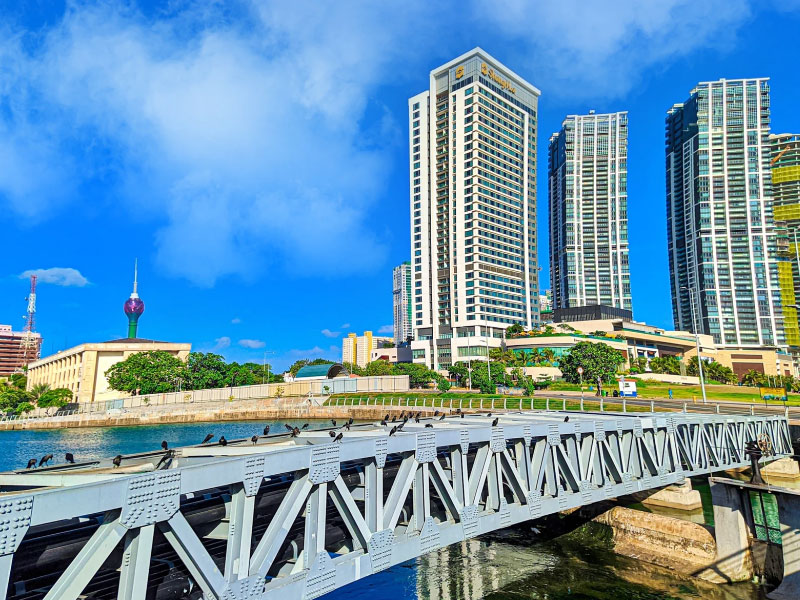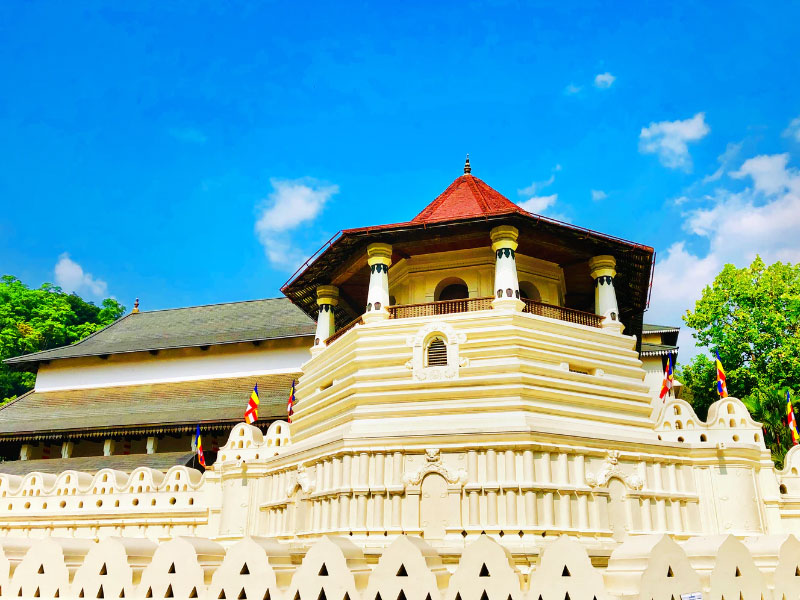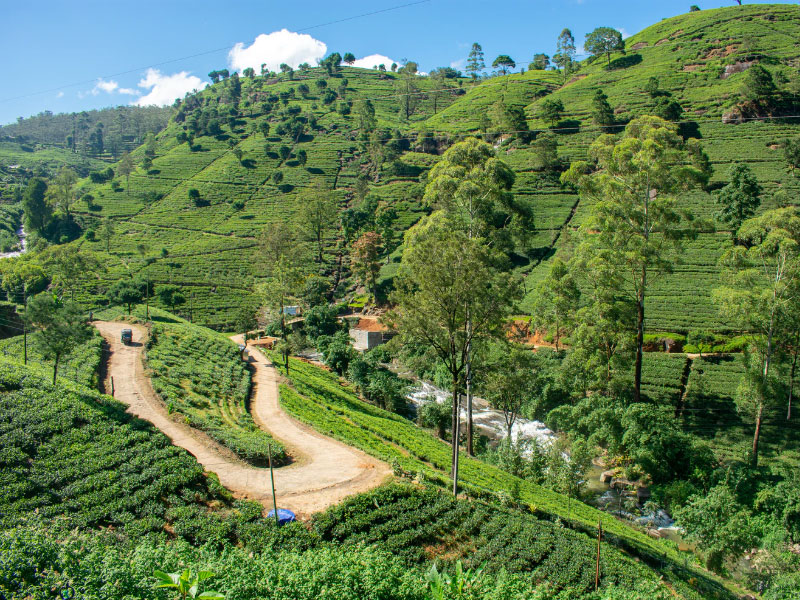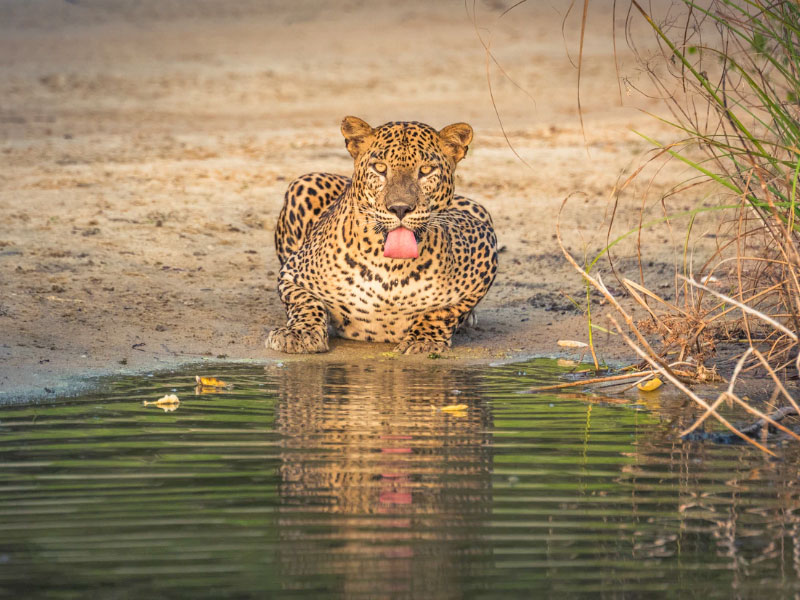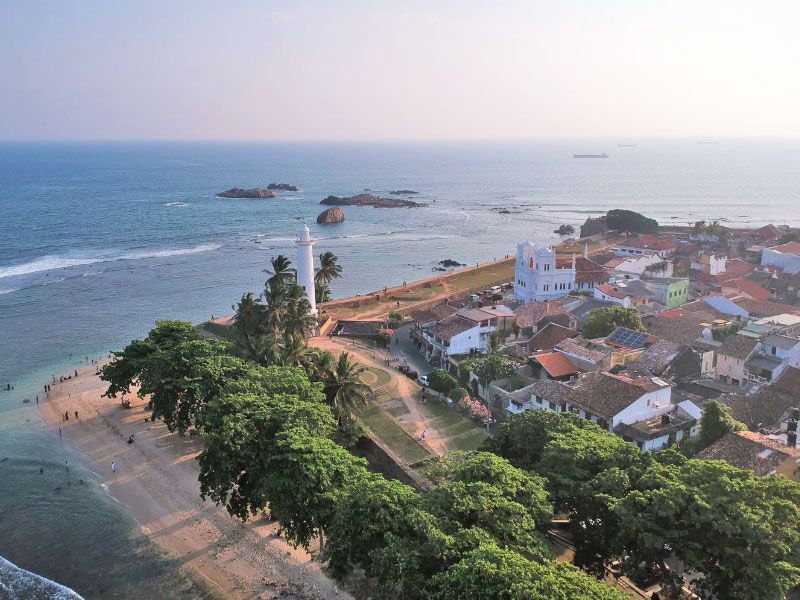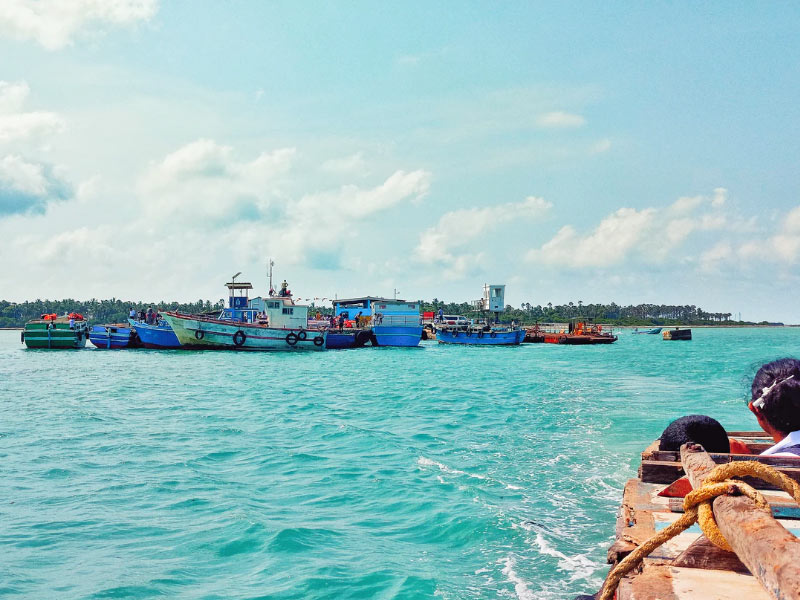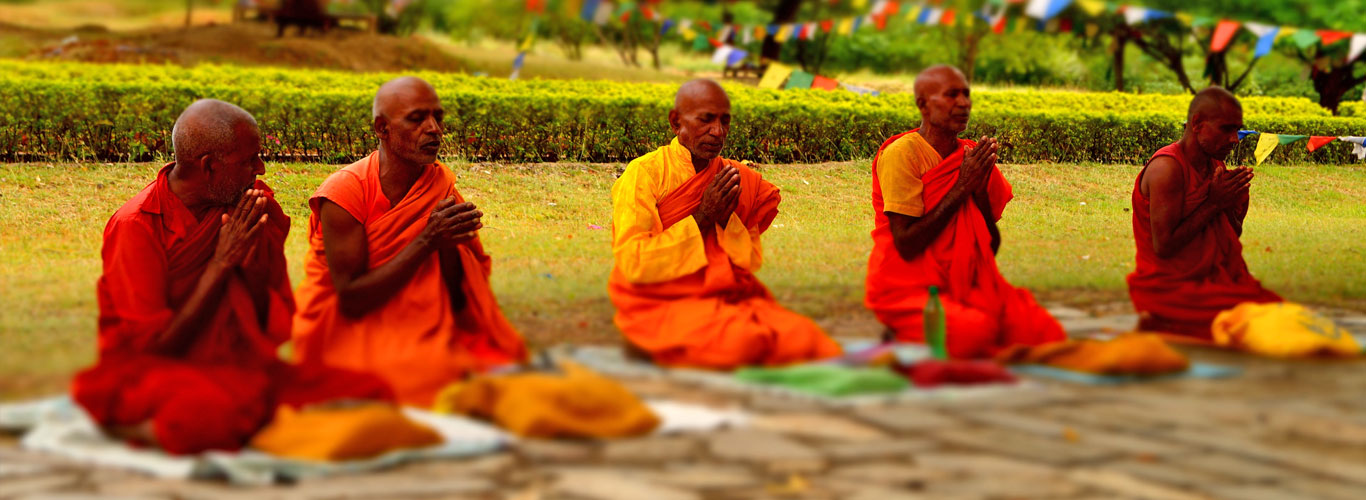
Sri Lanka
Sri Lanka, officially the Democratic Socialist Republic of Sri Lanka, is an island country in South Asia, located in the Indian Ocean southwest of the Bay of Bengal and southeast of the Arabian Sea. Sri Lanka has been called “the pearl of the Indian ocean” because of its shape and location.
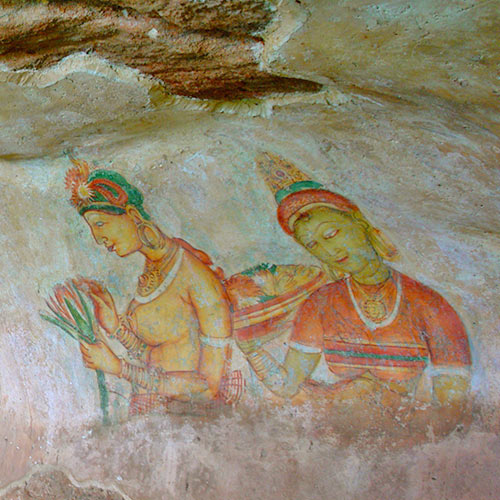
Sri Lanka by Author
Colombo, Chilaw, Jaffna, Anuradhapura, Dambulla, Sigiriya, Polonnaruwa, Matale, Kandy, Nuwara Eliya, Wellawaya, Galle, Colombo
11 Nights
Price on Request
View Tour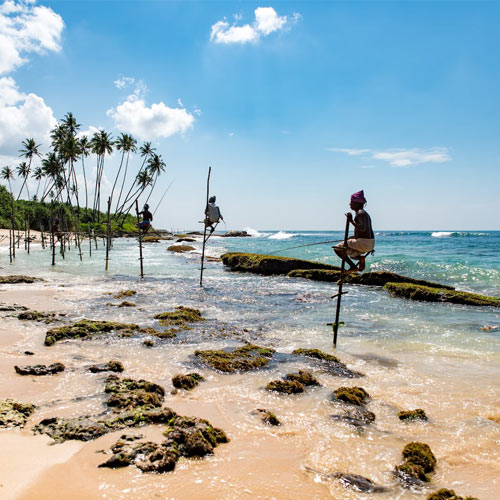
Sri Lanka Classic
Colombo, Chilaw, Anuradhapura, Dambulla, Sigiriya, Polonnaruwa, Matale, Kandy, Nuwara Eliya, Colombo
6 Nights
Price on Request
View Tour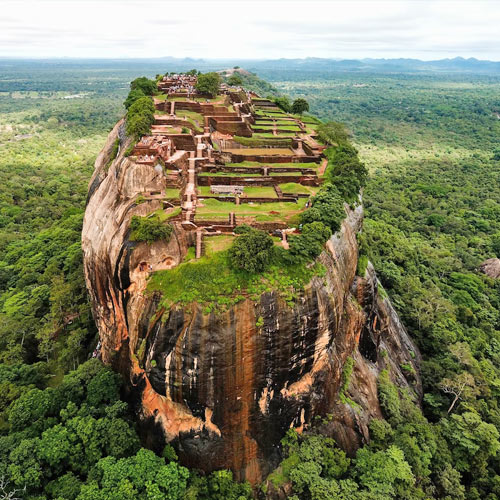
Sri Lanka Charming
Colombo, Dambulla, Anuradhapura, Polonnaruwa, Sigiriya, Matale, Kandy, Nuwara Eliya, Yala, Galle, Colombo
10 Nights
Price on Request
View TourSri Lanka has a recorded history that spans back 3000 years. Like its massive neighbour India, Sri Lanka is a diverse country, home to many religions, ethnicities and languages. It is also still blessed with a variety of wildlife that has survived alongside this human civilisation, on this small island for centuries. Today it offers tourists a diverse experience - from the modern city of Colombo with its skyscrapers to national parks teeming with elephants and religious and cultural buildings of multiple origins.
BANKING AND CURRENCY
Currency
Sri Lanka Rupee (LKR; symbol Rp) = 100 cents. Notes are in denominations of Rp2,000, 1,000, 500, 200, 100, 50, 20 and 10. Coins are in denominations of Rp10, 5, 2 and 1, and 50, 25, 10, 5, 2 and 1 cents. There are also large numbers of commemorative coins in circulation.
The import and export of local currency is limited to Rp5000. The import of notes from India and Pakistan is not allowed. Otherwise, the import of foreign currency is not restricted but all amounts over US$10,000 are subject to declaration at customs. Export of foreign currency is limited to the amount declared on import.
Foreign currency can be changed at authorised exchanges, banks and hotels.
Banking
Banking hours: Mon-Sat 0900-1300. Some city banks close at 1500, some even have night-time banking facilities.
MasterCard and Visa are widely accepted. American Express is also often accepted. The tourist board urges caution when paying by credit card due to the potential for fraud.
Major cities have ATMs, although not all will accept international cards, especially the national bank. It is advisable to try to have some cash at hand whilst travelling, particularly in rural areas.
Traveller's cheques are often not accepted. If you find somewhere that will exchange them, the rate of exchange for traveller's cheques can be better than the rate of exchange for cash but there are handling fees to consider and banks are more likely to give a favourable rate than hotels. To avoid additional exchange rate charges, travellers are advised to take traveller's cheques in US Dollars or Pounds Sterling.
TRAVEL, TRANSPORT AND GETTING AROUND
Domestic air services around Sri Lanka are limited, and most tourists travel by either road or train. If you do choose to fly, then the major domestic airport is Ratmalana at Colombo. There are reasonably regular flights to Jaffna, Palaly and Trincomalee by FitsAir (www.fitsair.com). Charter flights can be arranged by them, or by helicopter with Millennium Airlines.
With the opening of Mattala Rajapaska International Airport, domestic services are expected to begin operating between the east and south coasts in the near future.
Sri Lanka has a widespread road network, which accounts for nearly 95% of land transport across the country. Driving tends to be erratic, and most travellers either employ a locally knowledgeable driver or use public transport.
The quality of the country’s road varies considerably. The main coastal arteries are modern and well-maintained, while many of the mountain roads are poor-quality and pockmarked with holes. Road works are everywhere, demonstrating the island’s increasing prosperity and its commitment to infrastructure development.
E class roads are high-speed expressways, while A class roads represent the national highway network. B class and C class roads tend to be smaller and of varying quality.
Car hire services are available from several international agencies. To hire a car, visitors must have a valid driving licence and be 18 or over. In order to avoid bureaucratic formalities in Sri Lanka, an International Driving Permit should be obtained before departure. If not, a temporary licence to drive is obtainable on presentation of a valid national driving licence. Air-conditioned minibuses are also available. Motorised rickshaws are also readily available for hire in towns and villages. Chauffeur-driven cars are not too expensive and are recommended.
Taxis in Sri Lanka have yellow tops and red and white plates. In Colombo, taxis are metered but it is advisable to agree a rate before setting off. Drivers expect a 10% tip. A cheaper and more authentic option is to flag down a tuk-tuk - these open rickshaws are available for hire in abundance across the country.
Cycling in the cities is inadvisable, but in rural areas bikes are becoming increasingly common. There are four National Cycle Trails. Most bike hire agencies are concentrated in Colombo and Negombo.
The cheapest and most enjoyable way to get around Sri Lanka is by bus. Most vehicles are ancient, atmospheric and packed with chattering locals, and major routes include Colombo to Kandy, Colombo to Matara and Colombo to Jaffna. Timetables can be found on the website of the National Transport Commission (www.ntc.gov.lk).
The Central Transport Board provides intensive urban bus operations in Colombo, where there are also private buses and minibuses. Fares are generally collected by conductors. Services are often crowded.
Trains connect Colombo with all tourist towns, but first-class carriages, air conditioning and dining cars are available on only a few. Passengers can buy tickets online from Sri Lanka Railways (www.railway.gov.lk). New fast services operate on the principal routes, including an intercity express service between Colombo and Kandy, otherwise journeys are fairly leisurely.First-class carriages almost always book up in advance, so it’s best to secure your ticket early.
There is no official river transport network, but several tourism operators offer river cruises on the Bentota and Polwatta rivers.
FOOD, DRINK AND CUISINE ADVICE
All water should be regarded as being potentially contaminated. Water used for drinking, brushing teeth or making ice should have first been boiled or otherwise sterilised, whilst bottled water and a variety of mineral waters are available at most hotels. Unpasteurised milk should be boiled, and if possible powdered or tinned milk is advised; these are generally available in Sri Lanka. Pasteurised and sterilised milk is available in some hotels and shops. Avoid dairy products made using unboiled milk. Beware of eating salads - vegetables should be cooked and fruit peeled, and all should be washed in sterilised water. Street food in Sri Lanka is ubiquitous but use your judgement wisely and only eat well-cooked meat and fish, that have not been left sitting out.
Whether it’s a curry spread served in a private house or a succulent fish dish dressed to perfection in a restaurant, Sri Lankan cuisine is a true treat for the taste buds. Rice, spices and fruit are at the centre of most meals - expect a typical non-Westernised menu to feature staples such as mango lassi, Ceylon tea, curries and ‘roti’ flatbread. Prices are incredibly low outside the tourist hotspots, and it’s quite possible to eat like a king for less than £5 per day.
While Sri Lankan cookery is increasingly famous for its fine flavour combinations, most visitors will draw the line at being served curry at breakfast. Bigger hotels generally offer British-style spreads, but at smaller guesthouses you may need to ask for something a little milder. Expect a greater diversity of cuisine in large towns and cities such as Colombo and Negombo, where Chinese, Continental, Indian and Japanese menus are common.
In most Sri Lankan towns, you’ll find pavement stalls and corner shops selling street food specialities. No trip to the country is complete without a scrumptious snack bought from a street vendor but avoid unpeeled fruit and salads, which can trigger violent reactions in the uninitiated.
Alcohol cannot be sold on poya holidays (which occur each lunar month on the day of the full moon).
Most hotels include a 10% service charge. Extra tipping is optional.
CLIMATE AND WEATHER
Sri Lanka climate is tropical and consists of distinct wet and dry seasons. The Yala monsoon brings abundant rainfall to the country’s western and southern regions from May to September; the area experiences its dry season during December through March. Altogether, the southwest receives around 4000mm of rainfall each year. The Maha monsoon affects northern and eastern Sri Lanka weather and often lasts from October to January, with the dry season usually lasting from May to September. This region receives approximately 1000mm of precipitation annually, significantly less than the other half of the country. There is also an inter-monsoonal period in October and November during which rain and thunderstorms occur frequently across the island.
Generally speaking, upland areas of Sri Lanka are cooler and more temperate, with a yearly average around 16-20ºC (60-68ºF), and coastal areas are warmer with average temperatures around 27ºC (80ºF). The March-June season experiences slightly higher temperatures (up to 33ºC / 92ºF), while the temperatures in November-January are a few degrees lower (around 24ºC / 75ºF at the coast). Sri Lanka weather along the shores is made more comfortable by cooling sea breezes. The surrounding sea remains rather constant at roughly 27ºC (80ºF) year-round. Humidity is typically rather high in Sri Lanka, averaging out at around 80% year-round.
As the nation is located in the tropics, Sri Lanka weather can be severely affected by an El Niño. Though this irregular climate change only occurs around every three to seven years, the area’s weather can be altered for an extended time in effect. In the presence of a strong El Niño, expect a chance of drought conditions during the March-August months and possible flooding September-November. Floods regularly hit Sri Lanka, particularly in the southwestern region, so it may be wise to avoid the area during the wet season.
Sri Lanka climate can be at its most enjoyable in the drier seasons; the best time to travel to the west, south and upland areas of the island is during December to March, while the recommended travel season for the east coast region is April to September.
The most popular season for tourism is between December and March, when the country attracts Europeans fleeing the Northern Hemisphere’s winter weather. Christmas and the New Year are particularly popular for a Sri Lankan holiday, while July and August represent festival season on the island – if travelling during either time it is recommended to book well in advance to guarantee accommodation.
The island is certainly a year-round destination as there is usually one region of the country experiencing good weather, while others are hit by poorer conditions. The diverse topography of Sri Lanka allows for balmy beach holidays on the east coast from April to November, while the west is ideal for hitting the beach from December to March. However, be aware that Sri Lanka weather can be unpredictable during any season.
CLOTHING AND DRESS RECOMMENDATIONS
The weather in Sri Lanka can be unpredictable during any season so depending on where in the country you’re going, it’s best to take layers. The central highlands can be significantly cooler throughout the year, so you’ll need warmer clothes here. Lightweight rainwear is also recommended any time of year.
ELECTRICITY AND PLUG STANDARDS
For the most part, electrical sockets (outlets) in Sri Lanka are one of two types: the "Type D" Indian 5 amp BS-546 or the European CEE 7/16 Europlug. The Indian socket is actually an old British standard. The "Type D" Indian plug and socket is not to be confused with the "Type M" South African plug and socket. In pictures, they look very similar, but the South African type is much larger than the Indian type, and they are physically incompatible. If your appliance's plug doesn't match the shape of these sockets, you will need a travel plug adapter in order to plug in. Travel plug adapters simply change the shape of your appliance's plug to match whatever type of socket you need to plug into. If it's crucial to be able to plug in no matter what, bring an adapter for both types.
Electrical sockets (outlets) in Sri Lanka usually supply electricity at between 220 and 240 volts AC. If you're plugging in an appliance that was built for 220-240 volt electrical input, or an appliance that is compatible with multiple voltages, then an adapter is all you need.
But travel plug adapters do not change the voltage, so the electricity coming through the adapter will still be the same 220-240 volts the socket is supplying. North American sockets supply electricity at between 110 and 120 volts, far lower than in most of the rest of the world. Consequently, North American appliances are generally built for 110-120 volts.
